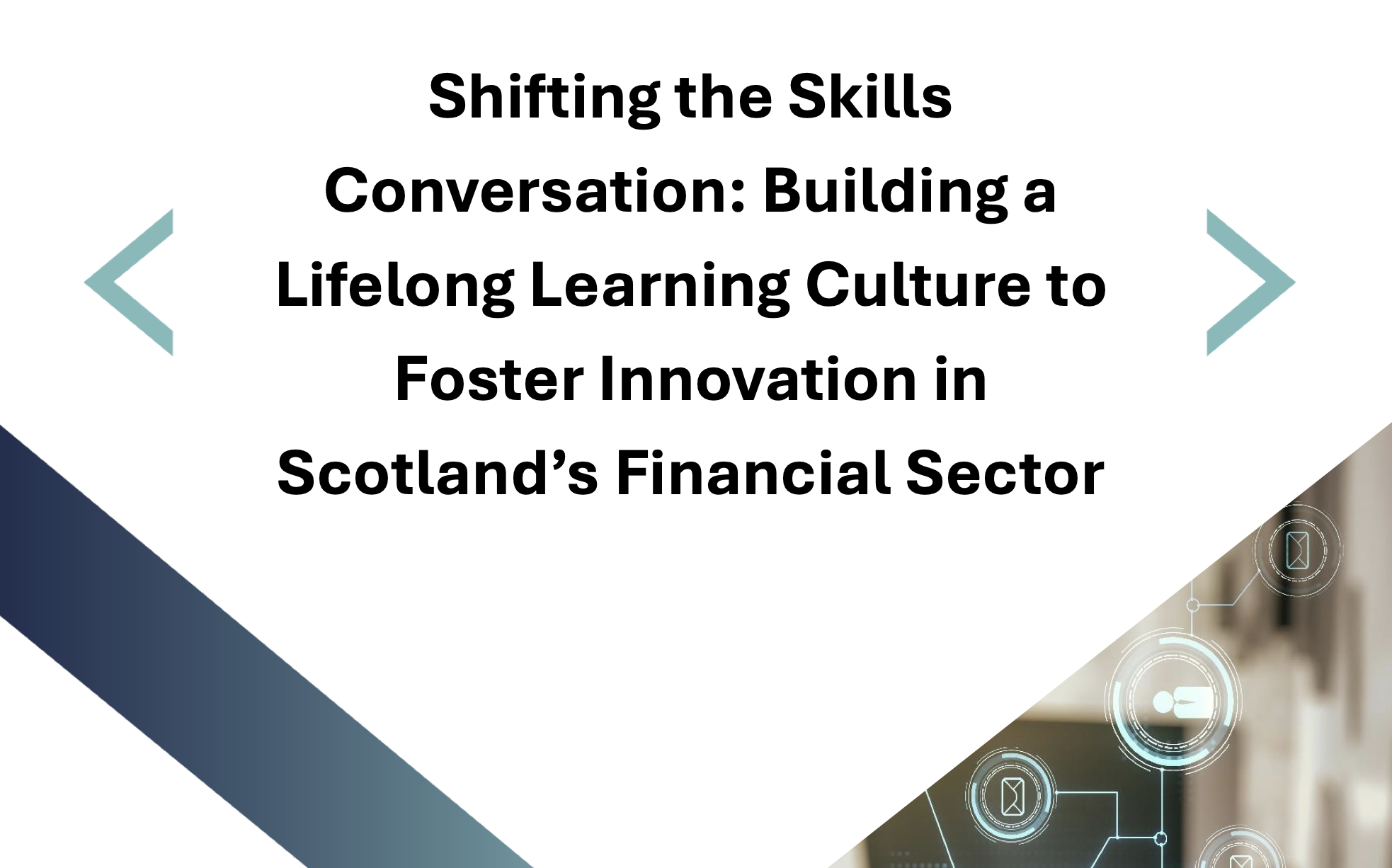The Talent Solution Most Enterprises Are Missing Out On

The societal and digital disruption brought about by COVID-19 has changed the way we work. Enterprises are having to reassess how they can develop, hire and invest in talent in their workforce as we move into 2022.
At the same time, employees’ views on career success, mobility and even the meaning of work itself have undergone a seismic change.
In fact, data shows that in the UK alone, the number of job vacancies is at an all-time high, reaching 1,219,000 in November 2021 ”” an increase of 434,500 from pre-pandemic levels.
Against the backdrop of the so-called war for talent’, businesses that want to maintain a competitive advantage over others need to find new and innovative ways of not only attracting top talent, but retaining it as well.
The traditional model
Traditional human resource management relies on a number of accepted ideas about how organisations work. Namely, a person is hired to do a particular job, and answers to a manager, who is in turn managed by someone else ”” all the way up to the top of the traditional hierarchical structure.
On the traditional career path, employees may eventually be promoted and climb the ladder within their chosen profession. A marketing assistant might eventually work their way up to becoming a marketing manager ”” but not an accountant.
And herein lies the problem: an employee is not just a CV. Placing someone in a box based on their job title alone ”” not on their actual skills, experience and personality ”” isn’t useful to anyone.
And while agile talent mobility might be relatively common within a job function (HR, marketing or sales professionals may jump from project to project fairly frequently), it’s rare for people to cross those boundaries and work on a project under a different discipline entirely ”” even when the skills and competencies needed for the role massively overlap.
For example, a data analyst working within a company’s IT department might make a fantastic addition to the team working on marketing analytics ”” but this is rarely the way it works.
The invisible talent problem
When companies need to staff a new project or build a new team, they’ll usually look to bring new talent on board ”” despite the fact they may well already have the skills they need in house.
As Gigged.AI’s CEO Rich Wilson explains: “Because of remote working and a largely distributed workforce, a lot of enterprises have no idea what talent they have internally. There’s so much money wasted by hiring new employees when actually, they’ve got that talent in house”.
Essentially, because of the silos the traditional company structure inevitably creates, enterprises have always found it difficult to understand exactly what skills and talent they’re sitting on.
The internal talent marketplace and the future of work
There are signs, though, that this mindset is beginning to change. Coca-Cola is just one big enterprise that’s starting to do things differently, and actually analysing the skills they have in-house.
These are skills that might not appear on a CV, that might have been picked up in a previous job ”” or a previous career ”” and that might otherwise have remained invisible. By bringing these skills to the surface, Coca-Cola hopes to identify opportunities for employees to have new experiences at work.
More importantly from the company’s perspective, this can help to retain talent as well. As Rich says, “There’s this sense right now that if somebody can make more money elsewhere, they’re going to leave. But people don’t just leave jobs for money ”” they leave because the project they’re working on’s not exciting, or because they’re not utilising certain skills.”
And it’s true: The Work Institute’s 2020 Retention Report found that compensation and benefits was only the sixth most common reason employees gave for leaving their jobs in 2019 ”” the first was career development.
By identifying their workforce’s core skills ”” and linking these with opportunities for employee development and the chance to work on new projects ”” companies can lower not only their staffing costs but their attrition rates as well.
And there are other big benefits to be had from implementing an internal talent marketplace too.
A broadened perspective for managers and employees
Coming into contact with different members of an organisation, either on a short-term basis or through a permanent job move, can broaden perspectives and help employees and management alike to develop positive traits such as empathy. An increase in empathy was the key theme of LinkedIn’s Global Talent Trends 2020 report, which also suggested that employees stay at companies with high levels of internal hiring 41% longer than at those with low levels.
Elimination of bias and increased DEI
In the current model, when projects are staffed internally, this is often done on a who-you-know basis ”” according to the LinkedIn report above, 50% of internal recruitment happens because a manager reaches out to an employer they already know.
Naturally, unconscious bias plays a role here, as people are much more likely to refer people who resemble themselves. It can also leave out talented employees who don’t have a strong network ”” but whose skill sets might be a good match for the project. By using an internal talent platform based on a comprehensive skill classification system, you can eliminate that bias and focus on the best person for the role.
Access to a broader talent pool
One of the biggest advantages of using an internal talent marketplace is that it can bring talent that might otherwise have been overlooked to the forefront. Like in the case of Coca-Cola above, enterprises can access skills that their employees may have picked up in previous roles, or transferable skills that could make a person a great fit for a role they might otherwise have been dismissed for due to lack of job-specific experience. As an added bonus, companies can also see a reduction in onboarding and training costs when new hires are already familiar with the business.
Drawbacks and pitfalls
Of course, there are problems with this approach too ”” most notably that it requires significant buy-in from management, employee engagement and a sizeable investment in tech.
Management buy-in
Surprisingly, according to Deloitte’s 2019 Global Human Capital Trends report, 46% of managers resist internal mobility, which can create a talent-hoarding culture ”” a big problem when it comes to implementing a successful internal talent solution.
Companies that want to adopt this approach to talent management, therefore, need to help managers understand that it effectively removes the need to jealously hang on to their top performers because it provides real-time transparency into the skills available within their organisation ”” and the opportunity to build and develop their team’s skills.
Hiring managers need to move away from the traditional talent acquisition model, which simply involves recruiting a candidate to do a particular job, and instead focus on fractionalising’: thinking in terms of projects and the knowledge and skills they require ”” knowledge and skills which may well be present within the organisation already.
Staff buy-in
The second problem is employee engagement, as employees (plus freelancers and contractors) usually need to manually input their details into their organisation’s internal talent platform to appear in searches. Although this might only take a few minutes, there needs to be some encouragement to motivate them to put themselves forward.
Team leaders can start by leading by example and entering their own skills and experience into the system. There should also be some education around the opportunities that the short process of filling in a profile could lead to ”” after all, only 28% of millennials surveyed in 2015 felt that their employer was making full use of their skills.
Tech investment
The last and perhaps most notable problem with implementing an internal talent marketplace at the enterprise level is the tech side. Building a platform in house will almost certainly be a time-consuming, complex, and ”” yes ”” astronomically expensive undertaking.
Thankfully, there is a solution available.
Introducing the Gigged.AI internal talent marketplace
Fresh from a successful pilot with The Data Lab, the Gigged.AI internal talent marketplace launches officially in the summer of 2022 ”” and can help large enterprises, universities and public sector harness the power of internal talent sourcing problems at the enterprise level.
Designed to meet the evolving business needs of companies in the post-COVID world, our white-labelled, data-driven solution allows managers at large enterprises to create a detailed and accurate statement of work using our innovative conversational AI chatbot. Our unique skills-matching algorithm will then use this to find the best people for the job from within your organisation.
You can run a quick check to see what talent you have internally within about 22 seconds ”” 22 seconds that could save your enterprise the thousands of pounds and months of lost time that typically comes with sourcing talent externally.
Gartner predicts that by 2025, 20% of large enterprises will have deployed internal talent marketplaces to optimise their utilisation and agility of talent.



